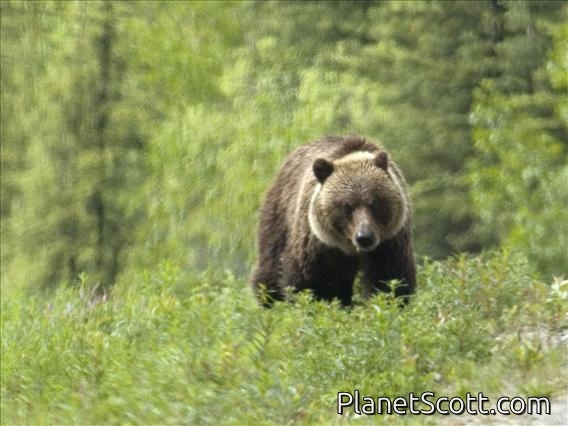Brown Bear (Ursus arctos)

Brown Bear (Ursus arctos)
×


Brown Bear (Ursus arctos)
About Brown Bear (Ursus arctos)
- Kingdom: Animals
- Phylum: Chordates
- Class: Mammals
- Order: Carnivorans
- Family: Ursidae
The brown bear is a large bear native to Eurasia and North America. Of the land carnivorans, it is rivaled in size only by its closest relative, the polar bear, which is much less variable in size and slightly bigger on average. The brown bear is a sexually dimorphic species, as adult males are larger and more compactly built than females. The fur ranges in color from cream to reddish to dark brown. It has evolved large hump muscles, unique among bears, and paws up to 21 cm (8.3 in) wide and 36 cm (14 in) long, to effectively dig through dirt. Its teeth are similar to those of other bears and reflect its dietary plasticity.
Source: Wikipedia
Lifelists
Visits
-
2000-06-15
Arctic National Wildlife Refuge, United States of AmericaSeen along the river, but most common on the north slope foothills in the 1002 area where there was a mother with two cubs as well as a lone pale colored bear digging for squirrels. -
2010-06-05
Denali National Park, United States of America -
2012-07-12
Yellowstone National Park, United States of AmericaSeen from a great distance in spotting scope. ID based on expert opinion.

